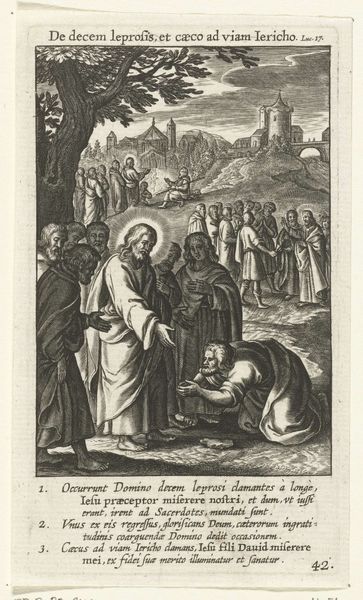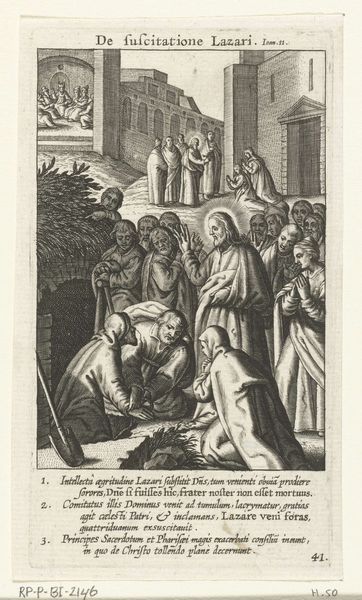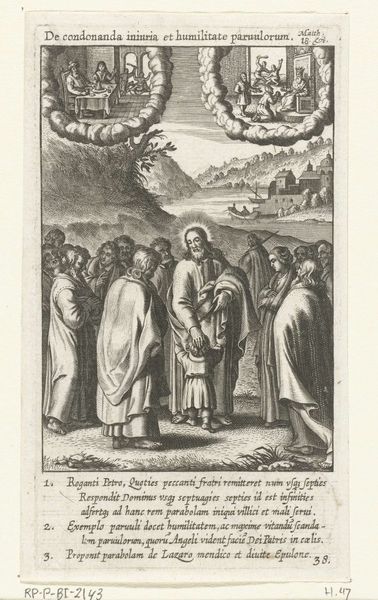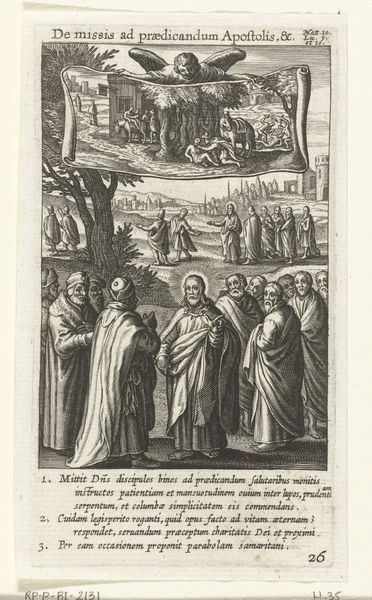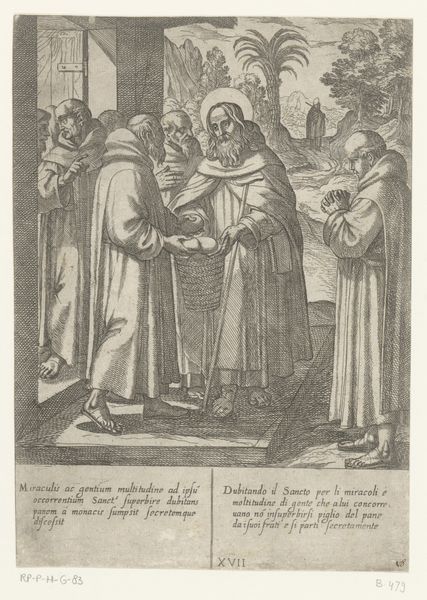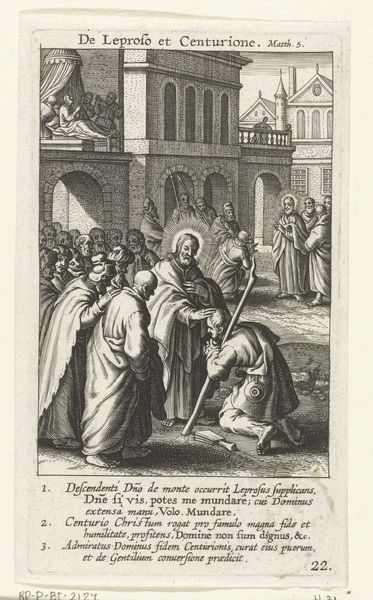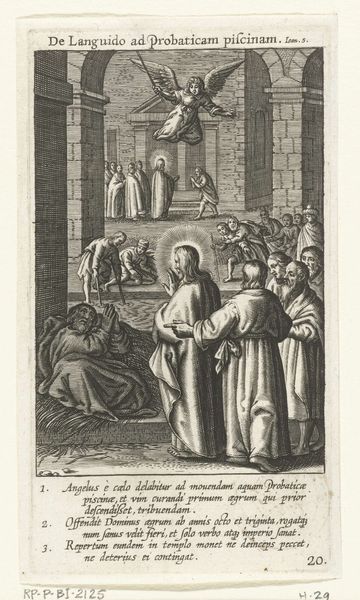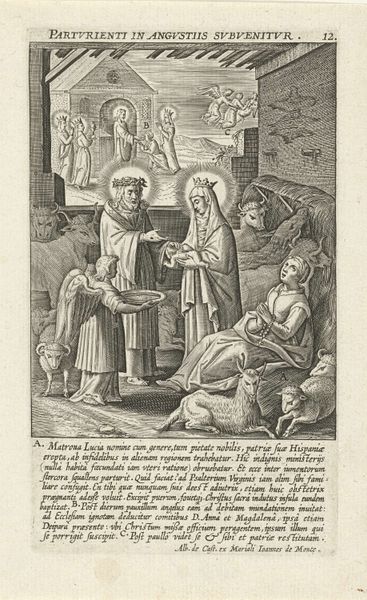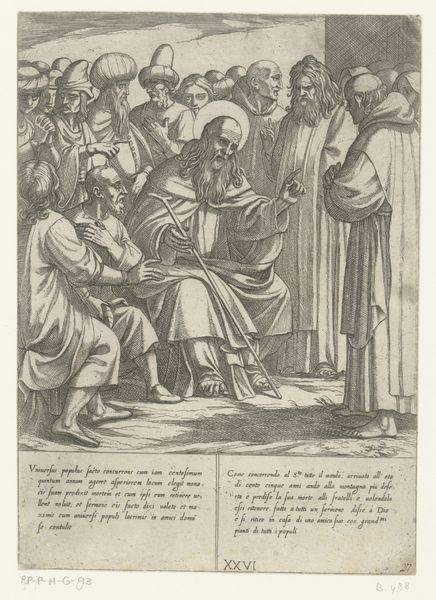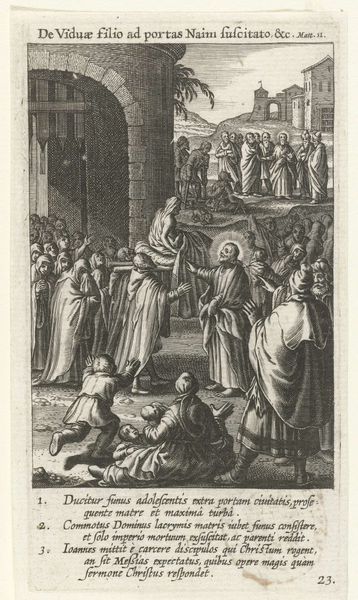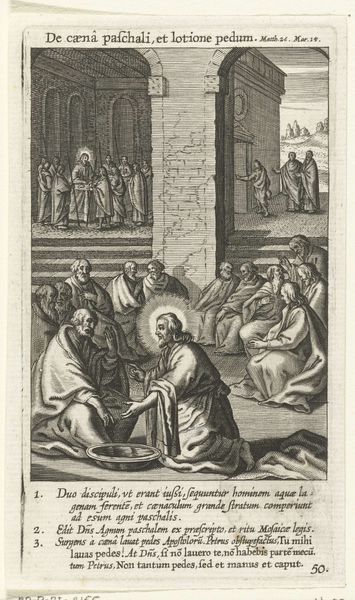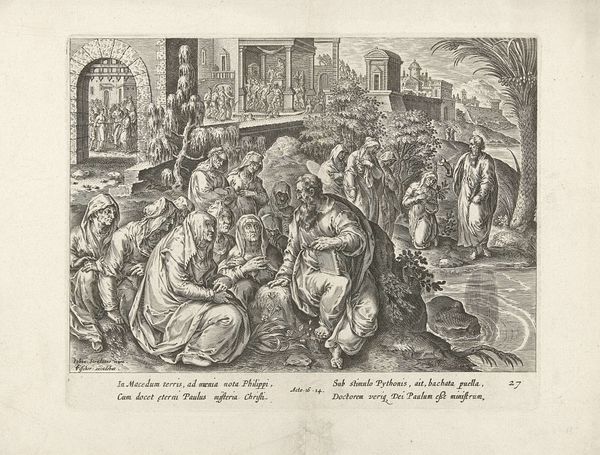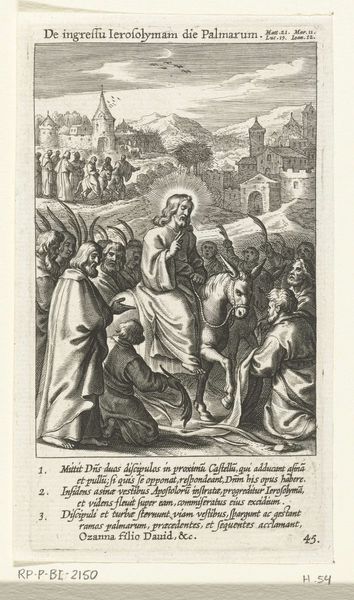
print, intaglio, engraving
#
narrative-art
#
baroque
# print
#
intaglio
#
figuration
#
engraving
Dimensions: height mm, width mm
Copyright: Rijks Museum: Open Domain
Curator: What strikes me immediately is the density of this engraving. There’s so much happening, so many figures, rendered in this incredibly precise, detailed style. Editor: Indeed. We’re looking at "Christ Healing the Man Born Blind," an intaglio print created by Boëtius Adamsz. Bolswert sometime between 1590 and 1622. It’s currently held at the Rijksmuseum. The Baroque aesthetic is palpable here. Curator: Absolutely, it's a narrative scene depicted with almost didactic clarity. The symbolism here is layered, you have the immediate miracle of healing, sight being given where there was none, the representation of spiritual illumination. The act of Christ is so emphasized but you notice this small dog; I find this quite captivating. Editor: The historical context of visualising religious parables cannot be divorced from questions of social inequality and faith. The positioning of Christ healing this blind man is a political statement regarding faith's intervention on lived social problems. This engraving provided access to the religious practice but was limited in social implementation. How could these miracles translate for people in the colonies? Curator: Yes, I recognize it too, with each panel portraying different moments in the biblical narrative: the disciples questioning Jesus, the healing itself, and then the subsequent interrogation of the healed man. Consider too how each grouping has different dynamics; they aren't random figures simply witnessing the action. Editor: The hierarchy in the image, with Jesus as the clear focal point, also reinforces this structure. What narratives do you see coming through the engraving itself in relation to ideas about class? There's a profound emotional depth and tension in their eyes. Is Bolswert leaning into Baroque ideas regarding movement here too? Curator: There’s an attempt to capture both the awe and the human connection in a single image. Looking at the broader cultural resonance and its influence throughout various interpretations in artwork shows this story still impacts society, how we empathize, interpret belief, and understand spiritual intervention. Editor: Thinking about the artwork this way opens avenues to explore complex socio-cultural interactions between the church, community, the artist and its viewers. It reveals itself to be not merely devotional but culturally, politically, a living document.
Comments
No comments
Be the first to comment and join the conversation on the ultimate creative platform.
